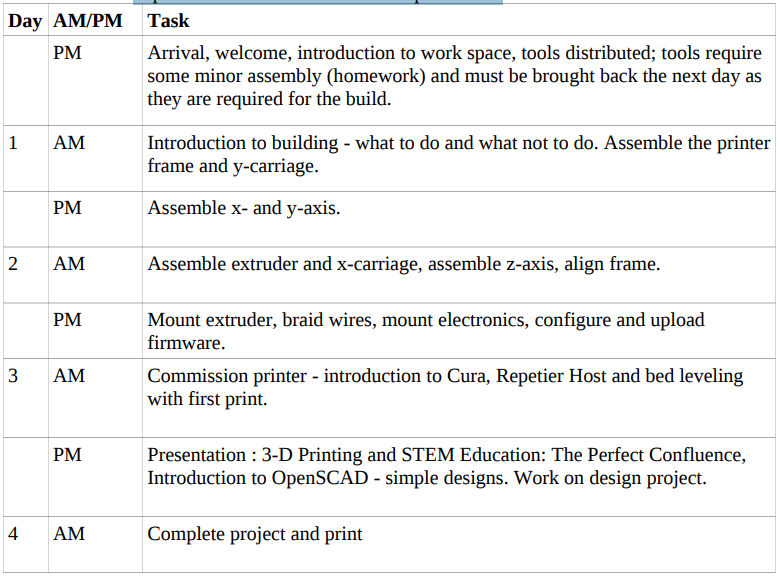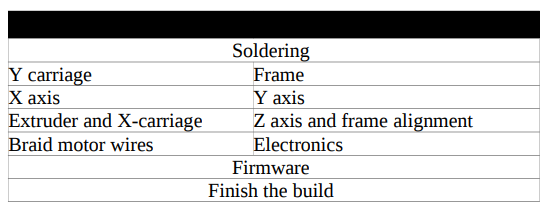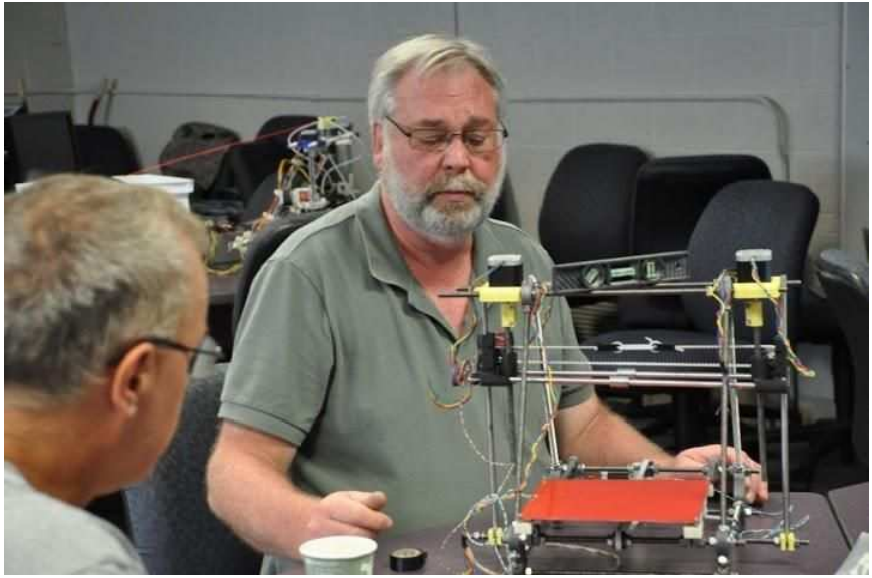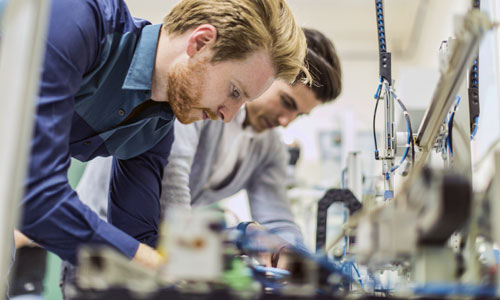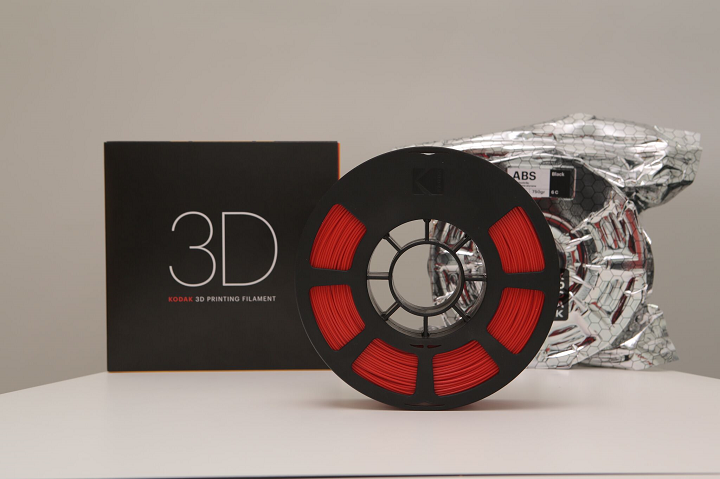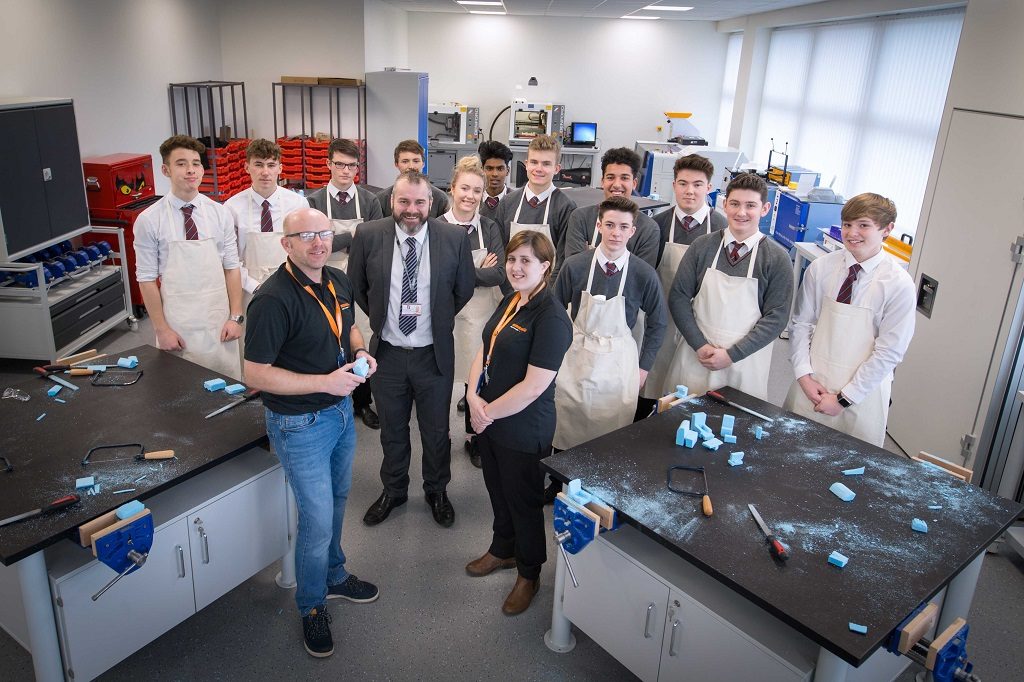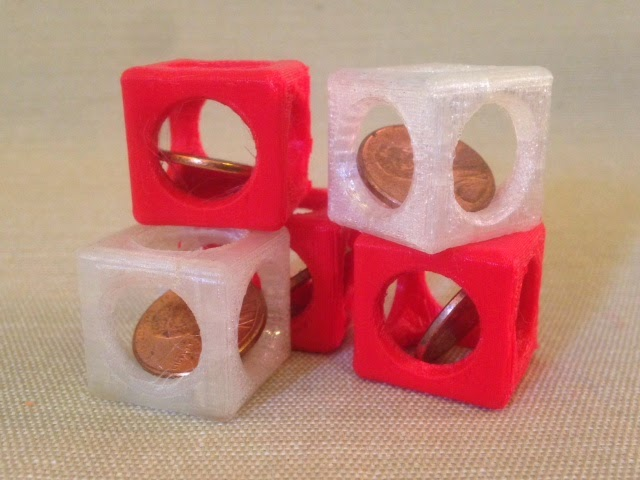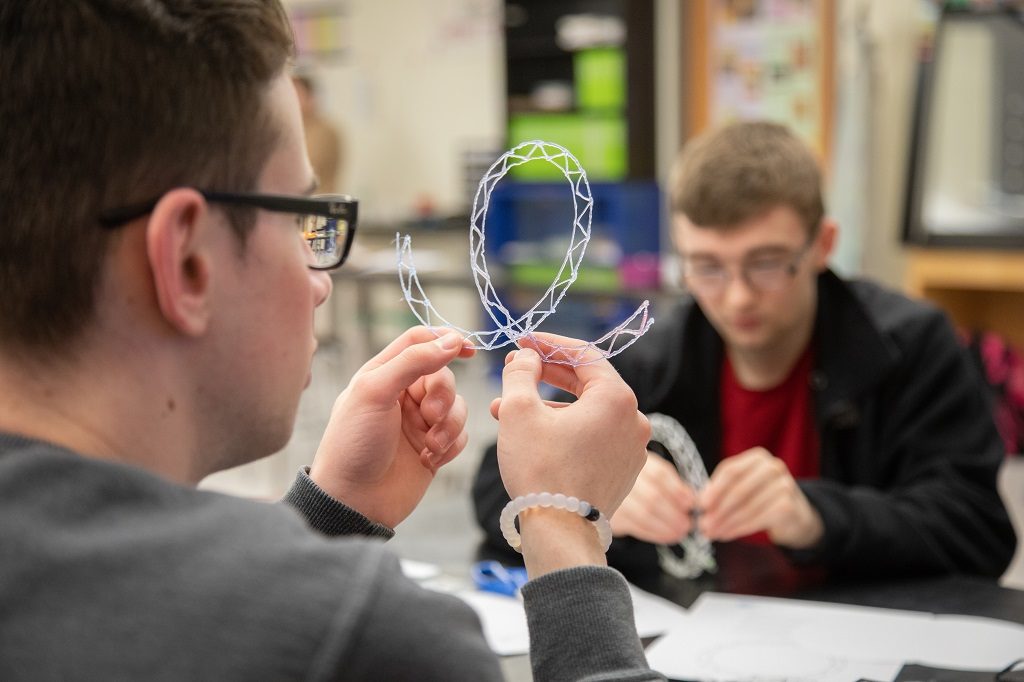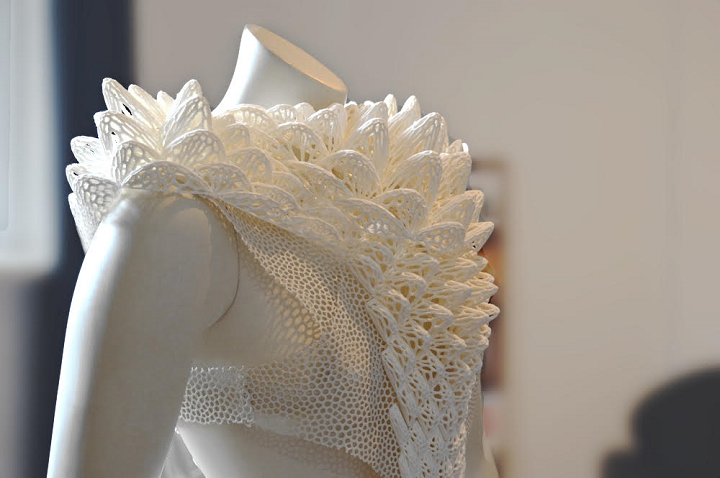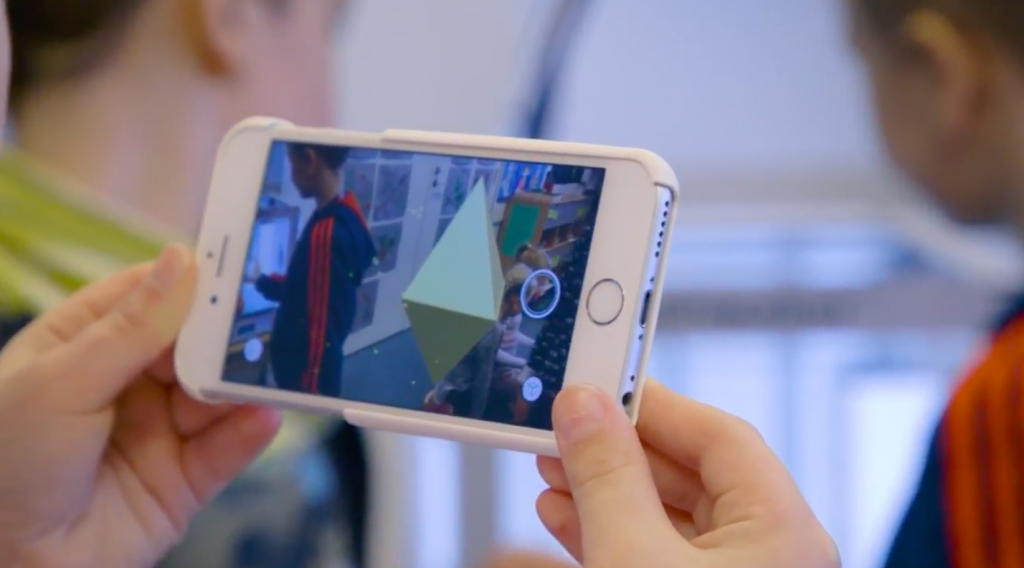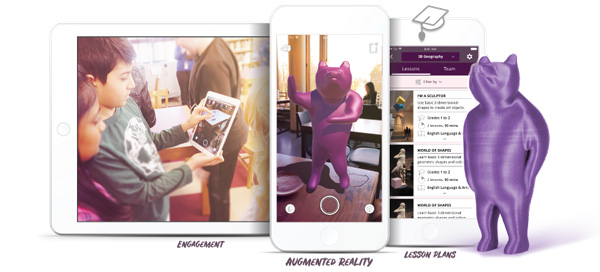Chelsea Schelly, Gerald Anzalone, Bas Wijnen, and Joshua M. Pearce, researchers from several different departments at Michigan Technological University, explore one of the most exciting aspects of digital fabrication in the world today, releasing findings from their study in relation to STEM education in the recently published ‘Open-Source 3D Printing Technologies for Education: Bringing Additive Manufacturing to the Classroom.’
Pointing toward the importance of STEM education (focused on science, technology, engineering, and math—also sometimes referred to as STEAM, with the oft-overlooked inclusion of art), the authors discuss the importance of 3D printing, along with the potential for interaction across curriculums—especially possible due to the communication and latitude offered through open-source technology and innovation.
While individuals are struggling to find jobs around the world, there has been an obvious source of frustration emanating from the STEM sector in terms of industry where employers are challenged to find suitably educated workers. Today, numerous international companies are offering special training programs, workshops for teachers and students, and there is continued emphasis on the need to encourage girls to pursue STEM education and jobs.
“Despite a protracted period of high unemployment, about 4 million jobs go unfilled in the U.S. due to inadequate numbers of college graduates in STEM-related disciplines,” state the authors.
While accessibility and affordability are touted as some of the greatest benefits to 3D printing, this is not always a reality for many educational settings. There may be budgetary concerns as administrative costs continue to rise on every level in education, funds are limited, and staff may not be sufficiently trained to step right in and lead 3D design or 3D printing endeavors.
Open-source technology is an enormous boon to eliminating budgetary obstacles in education, and especially with the use of RepRap-style 3D printers. The authors see ‘clear opportunity’ via STEM education with open source 3D printers (OS3DP), due to the ability for self-replication, ease in use with 3D printing, and accessibility to standard materials like PLA.
“These OS3DPs have already been shown to provide scientific labs substantial economic savings by customizing both simple and advanced scientific equipment,” state the authors. “For example, to outfit a high school teaching laboratory with 30 optics setups costs less than $500 using the OS optics approach, compared to $15,000 for commercial versions.”
“Furthermore, OS3DP technologies can contribute to a transformative educational experience among teachers and students alike. Educators can themselves become students during a workshop intended to teach them something new.”
This was evidenced in the workshop offered for this study, as the researchers observed teachers ‘experiencing a transformation of understandings.’ For this research, 22 middle school and high school teachers were recruited for participating, emerging from a combination of disciplines related to STEAM. During the workshop, they were involved in building, using, and even troubleshooting OS3DPs for MOST RepRap 3D printers.
The printers resulted in an expense of around $550 each, but approximately half of the parts could be 3D printed. The workshop was meant to be self-directed for the educators, accentuated with both online instruction and visual tools. Facilitators were designated for additional help as teachers learned how to build fairly complex 3D printers. In terms of research, the authors were able to study perceptions of the teachers during the process, along with understanding more about how they perceived the opportunity to use OS3DP technology in school.
The workshop lasted three-and-a-half days at the Michigan Technological University campus, hosted by the Michigan Tech Open Sustainability Technology Laboratory (MOST), and funded by both Square One Educational Network and GM. A trained social scientist was on-site to observe, lead focus groups, analyze the material in workshop applications, and assess survey results at the end.
“This research was intended to improve the workshop design for future workshops, explore the potential for developing a scalable online workshop, and examine the meanings teachers associated with OS3DP technology as well as how they understand their potential for the educational setting,” explained the authors.
Build instructions were divided into two streams, with all members ‘continuously engaged’ in the build process for the 3D printers on hand in the workshop.
The project consisted of the following instructions:
- High-quality digital photographs of completed sections
- Animations demonstrating 3D view of parts
- Images demonstrating each stage of the build, with ‘clear documentation’
- Short presentations and demonstrations

The MOST RepRap Printer, which is color coded for easy assembly both in the physical parts but also in the animated graphics and on the wiki. Key: Silver: Frame (vertexes, rod clamps, wire holders, Melzi board mounts); Black: X-axis (motor and idler ends, x-carriage, belt terminators, end stop holder, 12 tooth T5 pulley); White: Y-axis (motor mount, belt terminators, y-carriage corners and bearing saddles, 12 tooth T5 pulley); Yellow: Z-axis (motor mounts, guide rod clamp, z-motor couplings, bar clamps, end stop holder); Red: Extruder (extruder drive body, idler, gears, extruder drive spacer with Bowden nut trap, extruder drive mount).
“As users can immediately see the results of their geometric designs, OpenSCAD is a good way to teach students geometry and coding,” explained the authors. “Despite the relative ease of use OpenSCAD is a powerful solid modeling program and was used to design all of the components in the 3D printers that were printed. Finally, OpenSCAD allows for parametric designs, which is the ability to alter a design to specifications by changing the parameters of the geometry of an object (e.g. shapes are written with variables that others can change).”
“This allows changes to be made to the design easily and quickly by simply changing the value of user-defined variables—so once one person designs it, everyone can quickly customize the design for themselves.”
Each team successfully completed the building of their printers and teachers were 3D printing parts by the end of the workshop.
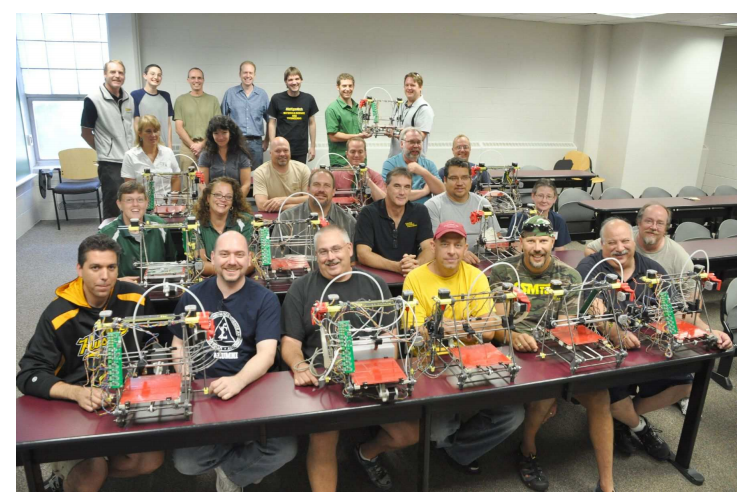
Group photograph of workshop participants (teachers and workshop facilitators) and their 3D printers after a successful RepRap build.
“Not only were the teachers successful in building their printers, and printing with them; they also experienced the empowering and transformative learning that they described as possible among students with the help of OS3DP,” stated the researchers. “Teachers were active participants in the creation of both knowledge and objects, communicating with and learning from each other, throughout the workshop.”
Teachers rated the workshop in a survey, with 85 percent reporting that they found the instruction method to be either extremely or very effective. All participants agreed that speakers during the workshop were effective, and comments regarding the technology were positive.
The data conclusively showed that the teachers participating did experience transformative learning regarding OS3DP, gaining an understanding of the value for their students, along with the opportunity for influencing students who may not be as involved in class, and challenging gifted students who may be typically bored. The researchers described feedback as ‘overwhelmingly positive,’ with comments from the survey making it clear that such education offers ‘powerful potential,’ and especially with the use of active learning.
“Teachers described how their understandings of these newly emerging technologies evolved via workshop participation, as they learned about their environmental, economic, and social impacts. They also described the sense of empowerment resulting from the experience of making something, in turning a pile of parts into an operable printer and then an abstract design into an actual object,” concluded the authors. “The teachers discussed this transformative potential as an important consequence of getting OS3DP in the classroom, as students themselves may be able to experience a transformation that allows them to see themselves as active creators, makers of objects and their own educational experiences.”
“We argue that OS3DP is transformative and empowering in an educational setting; we observed firsthand its effect of teachers, and believe it may bring transformative educational experiences into the traditional classroom by empowering students to be active creators rather than passive consumers of both knowledge and materials, transforming their perceptions of themselves and their abilities through active, participatory education.”
What do you think of this news? Let us know your thoughts! Join the discussion of this and other 3D printing topics at 3DPrintBoard.com.
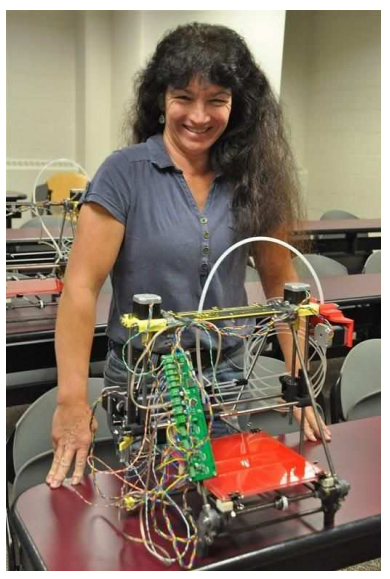
Assembled Printer, Day Two: A teacher with their assembled printer at the end of day two of the workshop.
[Source / Images: ‘Open-Source 3-D Printing Technologies for Education: Bringing Additive Manufacturing to the Classroom’]
The post Success in Education: Michigan Technological University Offers Comprehensive 3D Printing Technology Workshop to Teachers appeared first on 3DPrint.com | The Voice of 3D Printing / Additive Manufacturing.

